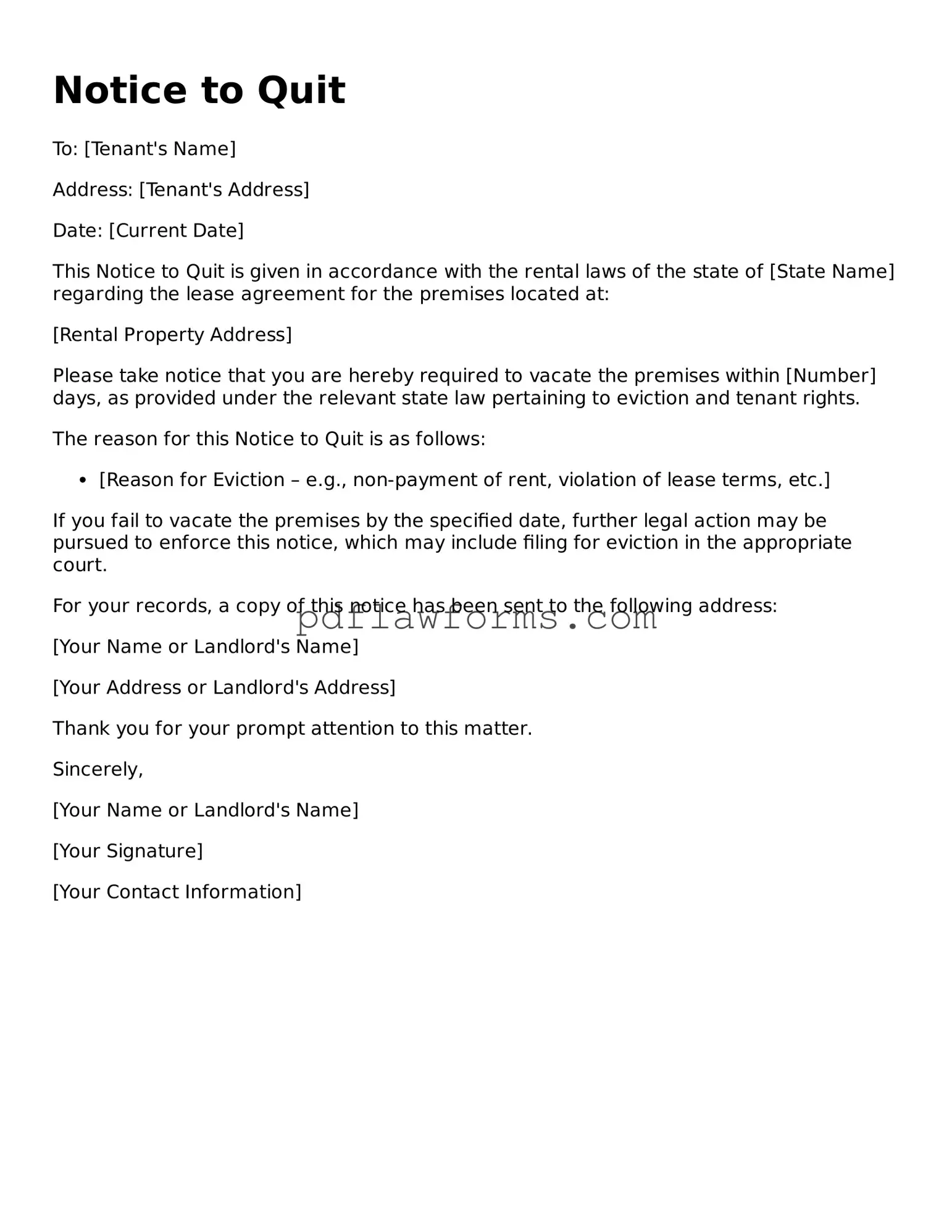The Notice to Quit form is a crucial document in the landlord-tenant relationship, serving as an official communication that signals the end of a tenancy. This form is typically used by landlords when they wish to terminate a lease agreement, either due to non-payment of rent, lease violations, or simply because they wish to reclaim their property. It outlines the reasons for termination and specifies a timeframe within which the tenant must vacate the premises. Understanding the requirements and implications of this form is essential for both landlords and tenants. Properly executing a Notice to Quit can help landlords avoid potential legal disputes, while tenants must be aware of their rights and responsibilities upon receiving such a notice. The form must be filled out accurately and delivered in accordance with state laws to ensure its validity. Failure to comply with these regulations can lead to complications in the eviction process, making it imperative for all parties involved to approach the situation with diligence and care.
